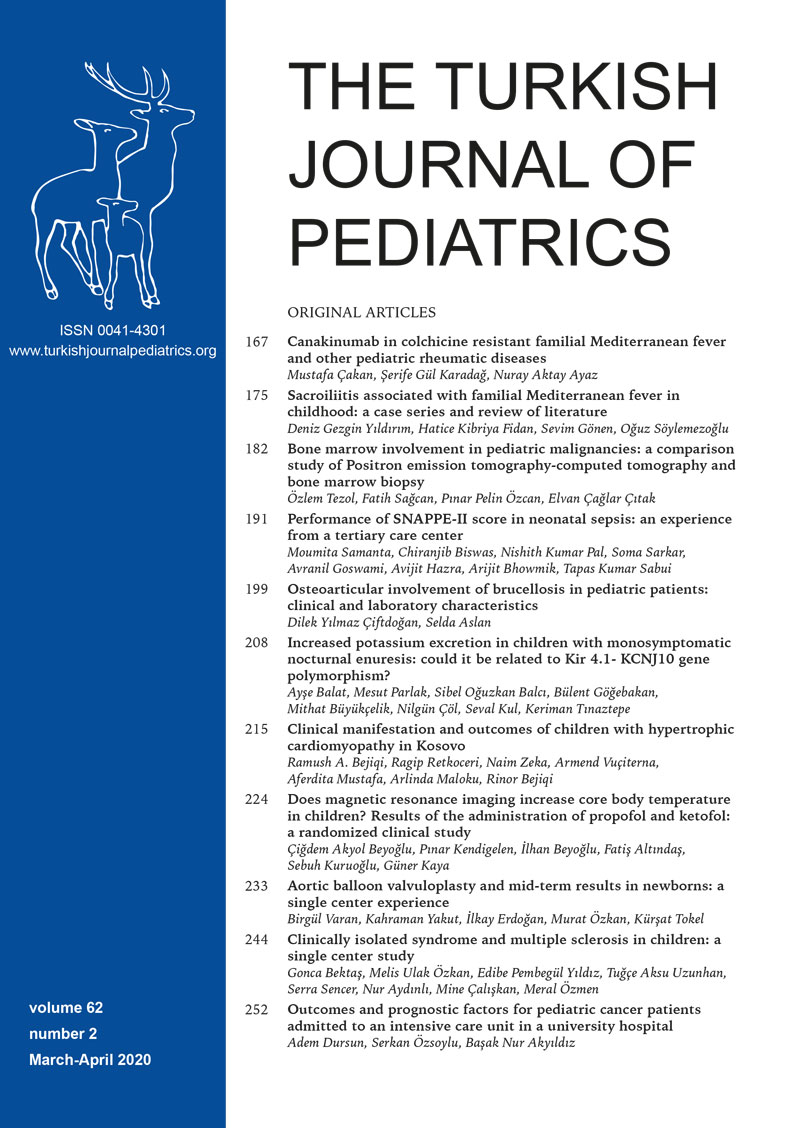Abstract
Background and Objectives. Aortic balloon valvuloplasty (ABV) has become the first-line treatment for critical aortic valve stenosis in infants. We aimed to evaluate the short- and mid-term results of patients who underwent ABV during neonatal period, the factors affecting the success and complications of the procedure.
Methods. We retrospectively examined 65 patients who underwent ABV during the neonatal period between 1998 and 2017. All hospital records including cardiac catheterization reports, echocardiographic information, and angiographic views were reviewed.
Results. Forty five (69.2%) of the patients were male and mean follow-up was 6.2 ± 4.9 years (range: 6 months - 19 years). The mean age of the patients at the first ABV was 14.5 ± 10.6 days (range: 1-30 days) and body weight was 3.25 ± 0.6 kg (range: 1.5-4.8 kg). The peak systolic gradient measured during pre-valvuloplasty cardiac catheterization was 73.3 ± 22.7 mmHg (range: 30-142 mmHg), and it decreased to 29.2 ± 12.2 mmHg (range: 5-55 mm Hg) after the procedure. Valvuloplasty was successful in 59 (90.7%) patients. There was no more than mild aortic regurgitation in any patient before valvuloplasty. There was mild aortic regurgitation in 21 patients before the valvuloplasty. In the acute phase after valvuloplasty, 30 patients had mild, 15 had moderate and two had severe aortic regurgitation. There was a significant increase in the degree of aortic regurgitation related to valvuloplasty (p < 0.05). The most important complication of ABV was increased aortic regurgitation (26.2%). Another important complication was femoral artery occlusion; and was detected early after valvuloplasty (61.6%). There was no serious complication or death in the acute phase.
Conclusions. In newborns with valvular aortic stenosis, balloon valvuloplasty has become the first choice in many centers due to its high success rate, low mortality and morbidity, and increased clinical experience. Aortic regurgitation and femoral artery occlusion were the most important complications. Although reintervention for residual or recurrent aortic valve stenosis is common during the first year after valvuloplasty, these patients are able to reach advanced ages without the need for surgical intervention. Surgical valvotomy is a good alternative treatment for a small number of patients in whom valvuloplasty fails.
Keywords: aortic valve stenosis, balloon valvuloplasty, complication
Copyright and license
Copyright © 2020 The Author(s). This is an open access article distributed under the Creative Commons Attribution License (CC BY), which permits unrestricted use, distribution, and reproduction in any medium or format, provided the original work is properly cited.














